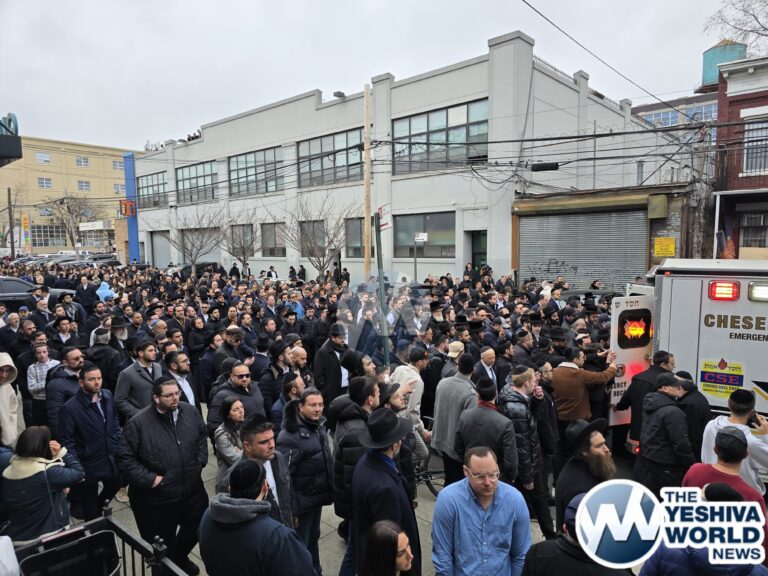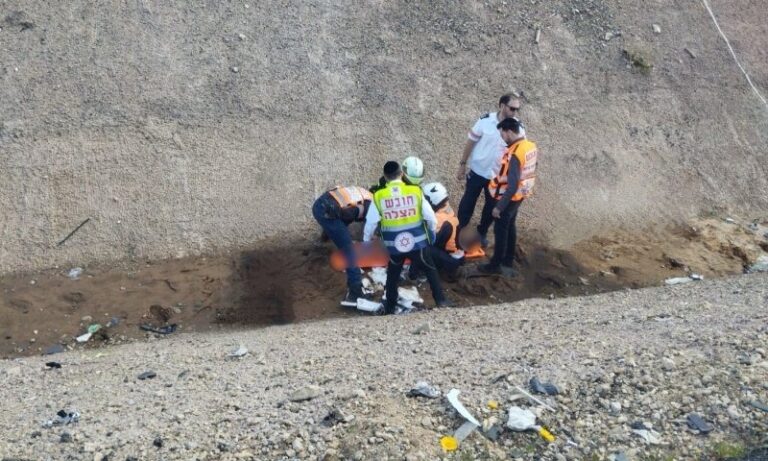(By Rabbi Yair Hoffman for the Five Towns Jewish Times)
Did you ever wonder what really goes on in Shmurah Matzah bakeries? What follows is a halachic analysis of much of what really goes on. Some places are careful regarding all of it. Others kind of gloss over some of the rest.
THE SCIENCE OF CHOMETZ
The world is filled with micro-organisms called yeasts that surround us. They are found everywhere – on the ground, on plants and trees, on human beings and even in the very air that we breathe. These airborne yeasts enter everywhere. They even enter into Matzoh dough, and feed upon the starches that are in the flour. The yeasts produce carbon dioxide. The carbon dioxide expands the gluten proteins in the flour. This is how dough eventually becomes Chometz.
The Gluten protein is the composite of two other chemical gliadin and glutenin. These gluten proteins are elastic. When the yeast break down the starches into alcohol and carbon dioxide, the dough begins to expand and to rise. The elements that help in the expansion of the gluten proteins are warmth, water and time. The yeasts produce more efficiently when there is warmth.
Another factor that is not so well known is atmospheric pressure. The higher the elevation, the lower the surrounding pressure and the more the carbon dioxide will expand.
THE WHEAT ON THE GROUND
Weather patterns in Eretz Yisroel and near Egypt are very different from that of Europe and the United States. In Eretz Yisroel there are only two rainy seasons. There are no rains otherwise. In Europe and in America it rains constantly.
Because wheat that has ripened fully can become Chometz while yet attached to the ground, one should cut the wheat while it is still green (See SA 467:5 and MB 453:22). This halacha is applicable in Europe and the United where it rains regularly. In Eretz Yisroel, however, the custom is to cut it later.
MATZOS MITZVAH AND SHMIRAH
There are two type of Matzos: Matzos Mitzvah and regular Matzoh. Matzos Mitzvah are those Matzos that are two be used on the nights of the Seder in fulfillment of the Mitzvah, “In the evening you shall eat Matzos..”
Matzos Mitzvah can technically be baked from wheat, barley, oats, spelt, and rye. However, it is ideal, a Mitzvah min haMuvchar, to bake them from only wheat (Ramah 453:1 and MB 453:1).
The posuk states “UShmartem es HaMatzos” (Shmos 12:17) – which literally means, “and you shall guard the Matzos.” Our sages extrapolated from this posuk that these Matzos require a special supervision that it not become subject Chometz. In other words, it is not enough to just assume that nothing happened to them. Rather, ideally, the wheat of which a person wishes to make Matzos Mitzvah must be guarded to ensure that there is no concern of them becoming Chometz. This guarding is called “Shmurah.”
NOT JUST A HECHSHER MITZVAH
It is interesting to that obtaining Matzos for Pesach is not just a hechsher Mitzvah – a preparation for a Mitzvah. It actually involves this Mitzvah in and of itself – that of “ushmartem es haMatzos – guarding the Matzos.” This is indicative in the language of the Shulchan Aruch (OC 460:2).
The Mogain Avrohom (460:1)writes that it is ideal to bake the Matzos oneself because of the notion of Mitzvah bo yoser mib’shlucho – it is a greater Mitzvah to do something oneself than through a messenger. The Avnei Naizer (OC 472) decries the prevalent custom of people no longer baking Matzos themselves. The Mishna Brurah cites the view of the Arizal that one who works up a sweat through baking Matzos receives enormous merit.
Although it can be done through an appointed messenger or shliach, just buying the Matzos off the supermarket shelves is not the best way to fulfill this Mitzvah.
There are thus three methods in how people obtain Matzah.
- They either are deeply involved in the baking.
- They appoint a messenger to bake it for them (which can be accomplished through an order sheet).
- They buy it off the shelf (not the best way).
There is, however, a workaround for the off-the-shelf purchaser. If time is spent examining whether there are folds or bubbles in the Matzah that would render the Matzah unfit, then one does fulfill the special Mitzvah of guarding the Matzos.
The Matzos must be made for the sake of the Mitzvah. If the Matzah is made without the proper intentions, there is a debate among halachic authorities whether one can fulfill the Mitzvah with that Matzah[1].
If there is a halachic doubt concerning either the flour or the Matzos, even though they would be permitted through the principle of “Rov” that they are from a majority which would permit them or through the principle of “Sfek Sfaikah” a double-doubt, – they should not be used for Matzos Mitzvah – the Matzos on the seder night. This is the ruling of the Bais Meir which is cited authoritatively (MB 467:17).
GUARDING THE MATZAH
A THREE WAY DEBATE
There is a three-way debate among the Poskim as to when it should be guarded. Should it be guarded from the time of the harvesting of the wheat, the grinding of the wheat, or from the time of the kneading of the Matzah itself?
Ideally, we rule that the guarding for the Matzah that we use during the Seder should be done from the time the wheat is harvested, but at least from the time that it is ground. If one is hard pressed, then one may rely upon the more lenient view of the time that it is kneaded (See Shulchan Aruch 453:4).
According to the letter of the law, the Matzah that is eaten during non-seder nights does not need to be watched. However, Israel is a Holy nation, and they have taken upon themselves the custom that even these other Matzos should be watched (See Be’er Heitev 453:8 and MB 453:25).
Those that are especially careful in the Mitzvah make sure to only eat Matzah that was guarded from the time of harvest for the entire duration of Pesach. This was the custom of the Vilna Gaon (See Biur Halacha 453 Tov L’Shomram).
One should examine the wheat kernels before they are ground to ensure that they are not infested with worms.
Even when guarding the Matzos it is necessary to do with the correct intention, for the sake of the Mitzvah (MB 453:21).
THE HARVESTING
There is a debate as to whether the harvesting may be done by gentiles or whether the watching has to be performed with the proper intention but the harvesting itself may be done by gentiles with a Jew overlooking the process. The custom is to be lenient in accordance with the opinion of the TaZ (see BH 460: “Ain.”)
However, it is the opinion of the Bach and the Eliyahu Rabbah (and also perhaps the Vilna Gaon) that it should be done by a Jew. The PMG also questions the view of the TaZ and recommends that the process be done by a Jew when possible.
The use of a machine known as a “combine” to harvest the wheat is considered Lishma (see Chazon Ish 36:2). There are, however, individuals that harvest the wheat by hand. It is thus preferable that the combine be driven by a Jew who has the proper intentions.
If the grains have either sprouted or split, then effort must be made to remove them one by one (See MB 467:19). One should make sure that they comprise less than 1/60th of the total yield. This is only in regard to making sure that the Matzah is kosher. However, Matzah made from such wheat may not be used for the nights of the seder.
When the grains are transported they should be placed in new bags (See MB 453:32). They should also be accompanied by a Jew and not merely transported by train (or truck) without supervision (BH), even if there is no concern that they will be switched or can get wet.
When storage facilities must be completely dry and free of bugs and rodents. The key or combination should be exclusively held by an observant Jew. Flour with a high moisture content does not store well. The industry standard for moisture content is 12%. Anything above 14.5% is considered a high moisture content.
GRINDING THE WHEAT
Pious people observe the grinding of the wheat themselves carefully to ensure that there is no concern of the wheat becoming Chometz during the grinding process (Ramah citing the Mordechai 453:8). At a minimum, a G-d fearing individual with some knowledge of the halachos should be performing it. A child or someone without such knowledge should not be the one performing the grinding (MB 453:41 citing the PMG).
The wording of the Ramah seems to differ from that of the Pri Magadim. Are the pious people watching it or doing it? Is it sufficient merely to ensure that the grains are ground properly or does the very act of grinding itself need to be done with the proper intentions?
INTENT REGARDING GRINDING
Just as there is a debate regarding the nature of “proper intent” regarding harvesting, there exists a debate about the proper intent regarding the grinding of the grains as well. Ideally, one should follow the stricter view requiring that the flour be ground with the proper intent.
Therefore, the grinding should be done by hand rather than by machine. This is more of a serious issue than having the harvesting done by machine. More Poskim hold that grinding is not an action attributed to the operator of the machine as much as the harvesting would be. When the term hand-ground is used, it refers to manpower rather than power by machine. Therefore, grinding done by a bicycle would also be permitted.
We find that the stringencies in regard to the grinding of the Matzah have been practiced for thousands of years. Indeed, the Talmud Yerushalmi (Psachim 20) relates that Rabbi Yossi the son of Rabbi Abun did not wish to use a grinder who had been grounding wheat not destined for Matzoh because he was afraid that the grinder’s clothing may have had other wheat on it that was not designated for Matzoh use[2].
The machine used for grinding should be for exclusive Passover use. The reason is that other grinding machinery processes grains that were washed. The liquid from this water can gather in the machines and cause the flour to become Chometz.
GRINDER AND ROOM MUST BE CLEAN AND DRY
To be sure, the flour also has moisture content, and if the stones of the grinder are not cleaned from this moisture, the stones may also cause the flour to become Chometz. Many G-d-fearing individuals replace the stones of Passover grinders each year, on this account.
If moist grains were ground in the room, the walls and ceilings must be cleaned in order to grind flour for Pesach, as the flour particles can fall and mix into the Passover flour.
When the grinding takes place in the rainy season, care must be taken to make sure that water is not tracked in with raincoats, wet boots and umbrellas. The workers should make sure that their clothing is clean and that their hands and beards are clean and dry as well. The concern is that a particle of flour will have mixed with the Pesach flour. Although it will be nullified by the more than sixty times the amount of kosher flour, during the holiday of Pesach itself it is reinstated. (MB 467:16)
ALLOWING THE FLOUR TO COOL
The grinding itself causes the flour to be warm. Therefore, a dough that is made on the day that the flour is actually ground is more susceptible to becoming Chometz on account of the additional heat in the flour. Therefore, one should not knead the flour on the day that the flour was ground – one should wait at least a day or two. Ideally, it should be two days later.
At a minimum one should allow the flour to cool overnight (SA 453:9 and MB 453:42). If, however, it was done sooner than that, the dough is not forbidden. Rather, one should take extra precautions and handle the dough even more often so that it not be given a chance to rise.
When dealing with high speed grinders and a large volume of grain, the machinery can get very hot. The BaDatz Yerushalayim issued guidelines that the machine be slwed down so that the grinder temperature not reach more than 30 degrees Celsius (86 degrees Fahrenheit), and certainly never above 35 degrees Celsius (95 degrees Fahrenheit).
When grinding the wheat by hand, however, the flour does not warm up to any significant degree, and technically, one does not have to wait. However, it is good to be stringent in this matter (Be’er Heitev 453:20).
THE FORMULA RECITED
When grinding the wheat one should recite the formula, “LeShaim Matzos Mitzvah– for the sake of the Mitzvah of Matzoh.” (extension of Be’er Heitev 456:4 regarding drawing of the water).
THE FLOUR BAGS
Ideally, one should be careful not to place the bags of flour one on top of the other. One should also avoid sitting on top of the bags because the additional warmth can cause them to become Chometz faster (See Ramah 453:7). If a person did place the bags on top of each other for a significant amount of time, they should be separated and the kneading should not begin until 24 hours have elapsed (MB 453:35).
It is permitted to place them next to each other even if they are touching, because in this manner they do not warm up to any significant degree. Likewise, it is permitted to stack the bags of wheat before they have been ground, because until they are ground they will cool.
It is also worthwhile to keep the bags of wheat elevated above the ground in case of a water leak or flood.
SIFTING THE FLOUR
Before the flour is kneaded it should be sifted. The sifter should either be new or one used exclusively for Pesach. One may not kosherize a sifter and use it for Pesach.
If a new sifter is not available, it is preferable not to sift according to the Mishna Brurah.
Preferably a 40 mesh sifter should be used for hand-ground flour and a 60 mesh sifter should be used for machine ground flour.
Nowadays most facilities use electric sifters.
When sifting the flour, one should avoid speaking because saliva may come out of his mouth and ruin the flour (See Ritva Psachim 35a).
After the flour is sifted it is important not to force down the flour into the bags. Forced flour does not knead well (Ramah 456:1).
DOUGH SIZE
The Shulchan Aruch rules that one should not make a dough that is too large at one time, i.e. larger than the shiur of Challah without a bracha. This size is 1200 grams according to the Chazon Ish and 1250 grams according to Rav Chaim Noeh. Chazal felt that a person would not be able to adequately work the dough from all sides on account of its large size (SA 456:1). If one had done so, however, it does not cause the dough to be forbidden (SA 456:2).
Some hold that the size restrictions are specific to when one individual was making the Matzos, and the ovens were small ovens. Nowadays, however, the production of Matzos involves numerous people and the ovens are much larger. Therefore, nowadays a larger dough could be made without a concern that it be too large to handle. Nonetheless, G-d fearing individuals are still strict, like the first opinion.
TWO SEPARATE ROOMS FOR DOUGH MIXING
One person should be appointed to place the flour into the mixing bowl, and a different person should be appointed to place the water in (See MB 459:45). One person should not perform both tasks because the water can drip onto the flour and cause it to become Chometz. On account of this, it is worthwhile to have two separate rooms for this, where the person pours in the water through a portal.
When the flour is placed in the bowl one should recite the formula, “Leshaim Matzas Mitzvah.” (SA 456:1)
THE BOWL
One should make sure that there are no cracks or lines on the bowl in which one kneads the Matzah dough, as it will not be possible to clean it effectively afterward. It does not matter whether the crack is in the middle of the bowl or on the outer lip, there is a chance that some dough will enter the crack and become Chometz and will contaminate a later dough (Ramah 459:4). One should also be careful in this matter regarding the other means of production, such as the table, etc. (MB 459:39).
THE WATER REQUIREMENTS
One may only knead Matzos with water that is called “Mayim Shelanu” (SA 455:1). This is a Rabbinic requirement because regular water is warmed in the underground spring. Mayim shelanu is water that has been drawn before sunset from a spring, and allowed to have rested in pitchers for a full night. These waters have been cooled and will not cause the dough to become Chometz.
One may not place one’s hand in the mayim shelanu, because it will warm up the water.
In a very pressing situation, as long as the water was drawn before midnight, and twelve hours have elapsed since the drawing, the water may be used (MB 455:4).
When it is difficult to draw the water, it is preferable to draw it before twilight than after Tzais HaKochavim – when the stars emerge (MB 455:5).
Before the water is drawn, one should recite the formula “LeShaim Mitzvas Matzah.” (Be’er Heitev 456:4).
If there is not enough Mayim Shelanu, then it is permitted to add a smaller amount of regular water to the Mayim Shelanu to increase its volume. There is a debate as to whether one may add up to 33% (opinion of Bais Yoseph) or up to 49%. The Mishna Brurah rules leniently and permits up to 49%. (MB 455:38) It must be done before the kneading process and may not be done during the kneading process.
One may draw the water once for a number of days of baking. One should just take care that the water be kept in a cool location (SA 455:1).
The water should not be drawn by a gentile or by a child for perhaps they may not be so careful regarding Chometz. This is true whether it is for regular Matzah or for the Matzos that will be used on the Seder night. If it was drawn by them, the water is not forbidden to be used (Ramah 455:1 and MB 455:21).
One should filter the Mayim Shelanu. Some therefore place a cloth over the spigot of the container where the water is kept.
One should measure the amount of water that one will put in the dough. In Israel, for every half kilo one uses 250 grams of water. However, this changes based upon the flour and the climate.
One may also use rainwater instead of Mayim Shelanu (MB 455:28). The reason is that the sun does not heat up water when it is in the air[3]. Tap water, however, is forbidden because chemicals are added into the water suplly for various reasons.
Before one pours the water onto the flour one should recite the formula, “LeShaim Mitzvas Matzah.” (Be’er Heitev 456:4).
THE PREP AREA
One must cover up the windows in the area where one is baking. This is true even on a day when there is no sun. The concern is that it may be cloudy and the sun will emerge without one noticing.
Nowadays, when the oven heat is quite strong, one should ensure that there is an air conditioning unit where the workers are for two reasons: So that the dough not get excessively warm and so that the workers will not be unduly stressed by the heat.
It is a custom in Klal Yisroel to appoint a supervisor Mashgiach to oversee the process of baking (MB 459:33). He should oversee that every worker has clean hands and has his nails cut short.
The tables where the Matzoh dough is worked are covered with paper that is replaced every eighteen minutes. This paper should be stored in an elevated area rather than on the ground. One can make a tacit assumption that the floor of a bakery is considered Chometz.
THE FLOUR MAN
The person who handles the flour should not be the same person who puts the water in the flour. The reason is that he is filled with the flour dust and there is a chance that some of the flour could enter the mixture and become Chometz (MB 459:45).
THE WATER MAN
The water man should carefully measure the amount of water that he puts in the flour.
THE FARNEMER (THE MEGABEL)
This is the person who does the initial mix of the water and flour. The initial mix is central to the smooth flow of the rest of the process. The goal is to spread the water as evenly as possible throughout the mixture. Experience demonstrates that the key is not to use the palm of one’s hand to do the initial mix, but rather to utilize the fingers.
If he uses the palms of his hand what ends up happening is that some of the dough becomes soft and some of it becomes hard, making the job of the subsequent workers much harder.
He should also try to gather all the spread out particles of flour and push them toward the middle.
The process works best when the Farnemer digs a pit in the flour. He then spreads the water as evenly as possible.
It is also best if the Farnemer wears a pair of Kosher for Pesach latex gloves.
THE FINNER (LOSH)
This is the person who does the actual mixing. He must continue working with the dough until it is handed to the people who will form the raw Matzos. He must pound the dough with either his hand or with a device. After he is done with it he should continue to handle it. Just touching it is not sufficient to prevent the dough from becoming Chometz.
THE WORKERS
The workers must be adults and must have the capability of performing the activities of Matzah making with the correct intentions – Lishma. Someone who is not religious does have the capability of performing the acts of Matzah baking Lishma – with the correct intentions. However, there is the additional factor of making sure that the activities are performed with meticulous adherence to Halacha. The Pri Magadim (AA 460:1) rules that someone who does not observe the commandments is suspected of not adhering to halacha meticulously in regard to Matzah baking. Therefore, one should only consume Matzah produced by non-religious Jews if there was someone strictly observing them at all times.
Similarly, if the worker is not knowledgeable in halacha, there is also a concern. In such a situation there must be someone strictly observing the workers at all times.
THE KNEADING
The author of the Shulchan Aruch (459:2) writes that ideally, one should not leave the dough to remain without activity even for one moment. He goes on to explain that one it is touched by hand, if one leaves it without activity it becomes chometz, immediately. The term “immediately” needs to be defined
Matzah that was needed by a gentile or a deaf-mute, a child or someone who is mentally ill is invalid for use for the Seder itself. The same is true if it is baked by one of them (MB 460:3).
When a Jew stands over a gentile or a deaf-mute, child, or one who is mentally ill and tells them to have in in mind for the Mitzvah it is a debate as to whether it is kosher – even post facto. Some are lenient relying upon the daas of the adult Jew. If there is a choice between the gentile or the latter, one should opt for the latter.
One should not knead the dough in a sunny place, but should only do it in the shade. The reason is that the sun warms the dough and can make it Chometz.
THE EIGHTEEN MINUTE CLEAN UP
The manager should set a special clock or timer to indicate when the 18 minutes will elapse after the initial mixing of the water and flour.
THE WOODS TRANSPORTING THE MATZAH
After the Matzos are scored they are placed on poles to transport them to the oven. These poles are covered with a disposable paper. Even though the poles are covered, the woods are scraped afterward.
The woods that transport the Matzos to the oven each time must be different woods for each round of Matzos baked, as they get hot and could cause the other Matzos to become Chometz (Ramah 459:4 and MB 459:32).
THE OVEN
The Chayei Adam (128:27) writes that the oven should be kosherized since there is a concern that the previous bakers may not have been so careful in the baking.
THE BAKING
How long should the Matzah bake? If the Matzah were to be cut or broken and there are no strings of dough that could be pulled out it does not become Chometz after this point (SA 461:3). This sign, however, only works when the Matzah is still warm, but if it cooled down, the dough hardens and it is no longer an effective means of determining (MB 461:13) whether it was indeed fully baked.
The person baking the Matzah should be careful not to remove the Matzos prematurely – it should be baked to completion. If he did remove it early, he should not place it back into the oven, as it may have become Chometz in the interim (Ramah 461:3). If it was taken out and put back in by accident, the Matzah is not forbidden (MB 461:16).
Matzah that became folded and or stuck in a manner that the fire cannot reach the place where it became stuck is forbidden. If it was during Pesach, the entire Matzah is forbidden. If it was before Pesach one must remove K’dei Netilah 2.4 centimeters from the surrounding area where it was stuck (Ramah 461:5. Note: Rav Chaim Noeh requires only 2 centimeters, and Rav Moshe Feinstein requires 2.2 centimeters).
One must be careful that the Matzos in the oven not touch each other before they are fully baked. If they do touch each other and they are not immediately separated – they have the halachic status of folded Matzos. If it is before Pesach the amount of Kdei Netilah must be removed from both of them. If it happened on Pesach itself both Matzos are forbidden. If the person baking them separated them immediately and it was before they were inserted in the oven, it is permitted (Ramah 461:5).
A SWOLLEN MATZAH
A Matzoh that has become swollen in the middle of it, and the height of the swelling is above that of an Etzbah, the entire Matzoh is forbidden (Ramah 461 and MB).
One should not place the Matzoh at the very edge of the oven, because the front of the oven is not as hot, and Matzos placed there are not baked sufficiently with this heat. There is therefore a likelihood of it becoming Chometz. All Matzos that have become invalid, either on account of swelling, or folding or for some other reason should be completely removed from the work area so that the other Matzos not come in contact with them.
The author can be reached at [email protected]
[1] See Biur Halacha 460 “Ain.” The PMG rules that one does not fulfill the Mitzvah. The Ritvah rules that in regarding to kneading and baking one can assume that there is the proper intent when done without thinking. This is not the case, however, with harvesting and grinding.
[2] Mitzvas Chaburah 3:7
[3] This point is actually a debate in the Poskim. This Hilchos Ketanos cited by the Be’er Heitev holds that the sun does heat such water. The Shaar haTziyun disagrees with this view.












7 Responses
Another very informative article by rabbi Hoffman. It will encourage me to check my matzos personally to best be mekayem the mitzvah.
Of note, the translation of lesheim matzos mitzvah is not the same as if it would have been lesheim mitzvas matzoh.
Its interesting that this article was written now erev pesach and not a month ago when it wouldve been more l’myssa
The title is very misleading. It gives the impression that it’s going to be an exposé of matzah bakery’s misdeeds. While it’s simply an article of hilchos matzohs & chumrahs.
It is. Many Matzah Bakeries aren’t careful with these things.
Moadim l’simcha (tomorrow for you) As a seasoned home baker I have tuned the process in to an art form, and have threshed though the halacha , Most of the issues raised relate to the unfortunate and rot infested intersection of halacha and commercialism. One bakery owner told me that they and several others use an antique water mill. While this is a nice adherence to tradition, it is possible that the temperatures of those large stones may denature the enzymes necessary for the chometz process to begin. I saw another bakery that ground their own, with several small bore mills that appeared to me to be running continuously. Being more than mildly technically inclined, I would have to assume that flour may have reached 80C, at which amylase is disabled or destroyed, in which case all their matzo is disqualified.
Some rabbanim say that people should NOT bake their own matza if they are not experts as they might make mistakes. Better a b’diavad matza than l’chatchila chametz.
BTw, just out of curiosity why the Creole German with Hebrew in parentheses?
Avi K: The halacha and many Shu”t reflect that the normal practice was to bake at home. When large parts of the Klal baked their daily pita, it was not that hard to do it as matzo. I do like my late ashkenazi crackers, still there is a mishna that plainly means that chometz and matzo can be indistinguishable from on another.